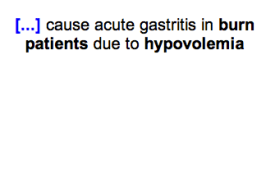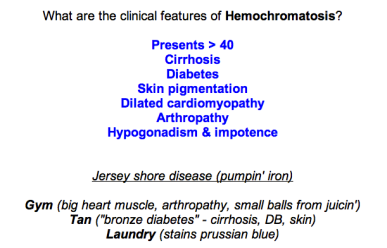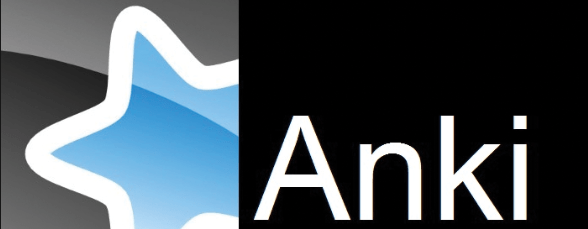It is February of my second year in medical school. Just over four months remain between me and the USMLE Step 1 exam. As such, my Step 1 preparation is well under way. Like many of you, figuring out how and what to study was half the battle. My tentative plan is in place.
To sum it up – I’m using Boards and Beyond as my primary starting resource to build a foundation, before transitioning into my UFAP regimen. And I’m using Anki to solidify and retain the information that Dr. Ryan teaches me. (If you are unfamiliar with Anki, just google it or something. Its great. If you’re unfamiliar with Boards and Beyond, read my review and breakdown here.)
After mentioning this Anki deck in past posts as well as Reddit threads, I’ve received several emails, Twitter DMs, and Reddit messages about sharing the deck. So, due to popular demand, I will share the link to my Step 1 Master Deck in this post for anyone who would like to use it to study.
But first, I’d like to use this post to explain the deck and my method, because I feel that it goes against conventional Anki wisdom. It differs pretty heavily from the popular Bros and Zanki decks.
My methods may not work for you, and that’s okay. Furthermore, I have not covered everything in Boards & Beyond and I do not make cards for every fact. I will upload a new version of the deck and post it here each time I finish a system/subject.
I’ll break down which resources I’ve used, what subjects are covered, and importantly, how I structure my cards. (If you don’t want to read all of this, just scroll to the bottom of this article for a link to the deck).
Resources
1. Boards and Beyond: I’d say 90% of the cards in this deck are derived from information presented in Boards and Beyond. That does not mean the information is exclusive to B&B (the majority overlaps with First Aid). Regardless, Boards and Beyond is my main resource right now, and I’m systematically working my way through each subject & system by watching the videos and making cards for the important facts. This Anki deck is best used as a companion to watching Boards and Beyond videos, which I highly recommend to all first and second year student (read my review here). The beauty of B&B, in contrast to First Aid, is the way Dr. Ryan explains the material and gives context to topics. Many of his explanations are included in the notes section on the cards.
Here’s an example of a simple cloze deletion Anki card. While knowing that Curling Ulcers are associated with burns is super easy, Dr. Ryan gives a fantastic explanation why, which I included in the note section.


2. First Aid: Often when making cards from a B&B video, I’ll compare the information to First Aid and assimilate the two. For example, if B&B lists 4 symptoms for a disease and First Aid lists a fifth, I’ll include the extra symptom listed in First Aid (and vise versa). Sometimes I’ll also just take interest to a particular subject that I want to memorize (HLA subtypes & associated conditions, tumor markers, etc) and make cards from FA information without having watched that B&B video yet.
3. USMLE-Rx: Sometimes when I get a question wrong in USMLE-Rx (usually when I’ve missed something multiple times), I’ll throw it on an Anki card so I don’t forget it.
4. Class Lectures: Very rarely, I’ll see something in lecture that stands out to me as “board testable”, but isn’t included in First Aid or B&B. Maybe like 5-10 cards total.
Material
As I mentioned previously, I do not make cards for every fact. If something is intuitive or easy to me, I don’t make a card. For example, I probably make 2-5 cards for a 10 minute physiology video, whereas 10 minutes of pathology or pharmacology will probably yield ~10-15 cards. The key to mastering physiology via Boards & Beyond is watching the videos and understanding, so I only make cards for the super high yield facts.
I started Boards and Beyond with Neurology and watched each video at least twice while doing USMLE-Rx questions and moved on. Thought I had Neuro mastered. I was super wrong and realized I knew nothing a few weeks later, which is what prompted the idea of this “master deck”. So, while I’ve already covered Neuro in B&B, there are no cards in this deck from Neuro. I’ll go back and make cards for Neuro when I’ve finished everything else.
Anyways, as of today (3/26/18), the systems completely covered in this Anki deck via Boards & Beyond include:
- Biochemistry
- Cardiovascular
- Endocrinology
- Gastrointestinal
- Hematology (minus most pharm)
- Musculoskeletal
- Pulmonary
- Psychiatry
- Renal
- Reproductive
This Anki deck covers these systems in their entirety. However, I’ve also covered more ground than this, but I don’t make many cards for the basic sciences (cell bio) or easier subjects (behavioral science). For these subjects, I only made cards for the super high yield stuff or when I hear Dr. Ryan say, “this is frequently tested on board exams” or “this is what they’ll ask you about on your boards”. Here’s a list for which subjects I’m talking about as well as what I made cards for:
- Basic Pharmacology: examples of important concepts (eg, what drugs undergo zero-order elimination)
- Behavioral Science: watching it once was enough, maybe made 2 cards total
- Biostats: only formulas – (PPV, Odds ratio, etc.)
- Cell Biology: Laboratory techniques (blots), pathology related to cell bio (eg, Xeroderma Pigmentosum), pharmacology related to the cell cycle (eg, RNA polymerase inhibitors)
- Infectious Disease: Primarily learning bugs & drugs with Sketchy, but I’ll make cards in relation to their systems (eg, Coxsackie B and cardiomyopathy, Clonorchis sinensis and cholangiocarcinoma, etc). Also keep in mind that I make cards for all the pharmacology learned in each organ system.
If you like the deck or want to give it a try when it’s more “complete”, bookmark this post and check periodically or follow me on Twitter for updates (@JordanSoze). I’ll be covering the remaining subjects in this order: Neuro > Dermatology > Genetics > Immunology > Idk.
My Method & Structure (Important)
Brosencephalon and Zanki are the two highly regarded Anki decks in the med school canon. I have the Bros deck, and sometimes when I’m bored in a mandatory lecture and want some extra practice, I’ll bust out some cards. But, they’re really not for me. I know that these decks have helped many students conquer and retain Step 1 material, but I dislike the structure. I’ll break it down.
Similarly to the aforementioned decks, many of my cards are still single-component questions. Some examples:
Q: What parasitic infection can lead to hypereosinophilic syndrome? A: {{c1::ascaris lumbricoides}}
Q: The {{c1::mesocortical}} dopamine pathway is responsible for the negative symptoms in schizophrenia (apathy, anergia)
However, some subjects and concepts don’t readily lend themselves to this simple of a card – disease symptoms, metabolic/biochemical pathway, side effects of X drug, and so on. For these types of questions, which require multiple answers, I find that making a card for each and every symptom or side effect is not only inefficient, but it also robs you of the context.
I’ll use the example of side effects. If you want to memorize the one, key side effect of Methyldopa, you can easily just make a card like… “{{c1::Hemolytic Anemia}} is a rare, but serious side effect of Methyldopa”. But what about drugs with extensive side effect profiles? It doesn’t work. So if you want to know the side effect of Thiazides, this is where I differ from Bros.
Bro’s card example: What is the musculoskeletal toxicity of Thiazides? {{c1::Hyperuricemia/Gout}}
My card example: What are the metabolic side effects of thiazide diuretics? {{c1:: metabolic alkalosis, hyponatremia, hyperGlycemia, hyperLipidemia, hyperUricemia, hyperCalcemia}} HyperGLUC (in the notes)
This way, whenever I see a question regarding side effects and thiazides, I simply have to remember one, single card versus trying to recall 6 different cards. This may seem harder initially, but it’s worth it in the long run. Because once you can do the card and start getting it right, you will never forget it. It’s much easier to remember one, longer card than it is to remember 6 separate cards. I promise.
This works because usually if you can remember one or two side effects, you can remember them all (especially with a good mnemonic).
I do this for drug side effects, disease presentations, risk factors for pathologies, biochemical pathways, and any other subject where you need to memorize a group of related facts.
Let’s say you want to learn the presentation & symptoms of Hemochromatosis. A Bros-style card might look like this:
{{c1::Hemochromatosis}} is a disease of iron-overload that results in hyperpigmentation, diabetes, cirrhosis, cardiomyopathy, hypogonadism, and arthopathy.
It’s too easy. After you’ve done this card a few times, you’ll see the phrase “iron-overload” followed by cirrhosis and immediately know the answer. You can easily gloss over and lose other characteristics. So, you may see a question in a Q-bank that describes Hemochromatosis in the vignette, then asks – what is another possible complication of this disease? Are you really going to remember all the complications and symptoms in that question? Or that it presents after age 40? Probably not. (at least I wouldn’t)
In my opinion, it’s much better to ask yourself to list all the symptoms. Then tie it together with a nice mnemonic/memory hook (or use one of mine), and you’re golden. Again, you’ll get this wrong a couple times no doubt and that will be frustrating, but once you start getting it right, you have mastered the clinical presentation of this disease.

That brings me to my next, and final topic in this post. For all of my bulkier, harder, and denser cards, I like to make some sort of memory hook or mnemonic to help me remember them. I find them extremely helpful (especially when they work really well with the answer).
If you look at that screenshot, you’ll see that in the notes section, under the answer, I’ve made my own mnemonic to compartmentalize and explain the presenting symptoms of hemochromatosis. To me, hemochromatosis is “jersey shore disease” cause those dudes loved to pump iron and their motto was “gym-tan-laundry“.
- GYM – cardiomyopathy (big muscles from pumping iron), arthropathy (pumping all that iron will make their joints sore), and hypogonadism/impotence (Ronnie was 100% juicing, and steroids make your balls shrivel).
- TAN – I mean the freaking disease is known as “bronze diabetes” (cirrhosis, diabetes, skin hyper pigmentation. It just works too well.
- LAUNDRY – While this isn’t part of the presentation, why not make the most of this memory hook and remember that they do laundry because they are stained with prussian blue
Another example: “What is the pattern of inheritance and chromosome implicated in Wilson’s Disease?” The answer is autosomal recessive and chromosome 13. And here’s my memory hook:

plus, Olivia Wilde showing up on an Anki card is good for morale
I love this stuff and I’m proud of these. Let me have my moment. If you don’t like them, no worries – just delete it.
Finally, in the notes section under the answer to a card, I almost always write an explanation as to why the answer is what it is. Dr. Jason Ryan does a great job of giving you the why, and I like to incorporate that into the cards. Sometimes the note section I’ll write an explanation that makes sense to me. Sometimes I’ll insert a chart. Sometimes I’ll throw in a picture for things like histology or radiology. And sometimes I’ll just include a a little table or quote from First Aid. You can ignore or delete these if they make the card look too cluttered.
Conclusion (Tl;dr)
I have been progressively compiling a Step 1 Master Anki deck primarily based off of the Boards and Beyond videos (if you would like to know more about Boards and Beyond, click here). I have covered all organ systems except Neurology, Dermatology, and the general (Immune, genetics) chapters as of 3/26/18. I am currently working on the Neurology chapter, which will be followed by Dermatology. Each time I finish a system, I will update this post with the new version of the deck.
Most Anki users who have learned from the Brosencepahlon and Zanki decks may find my deck & methods a little bit different. While there are many single-component quick recall questions, there are also many cards which ask for lists, groups, and pathways to be recalled in their entirety.
While it may be more challenging at first to recall a list of 5 side effects or 6 symptoms of a disease, I believe this is actually a more efficient way to learn material, especially topics that can’t be easily reduced to a single answer. Being able to recall a list all at once without a specific prompt (“what are the four acquired causes of Fanconi syndrome?”) is better for long-term retention and it helps you group related things together in that big ol’ brain of yours.
These sorts of cards also include a lot of mnemonics & memory hooks, some of which I created (see my Hemochromatosis – “jersey shore disease” example above) and some that are simply taken from First Aid (eg, the classic MUDPILES and HARDASS). If you don’t like these, just delete ’em. In the notes section, I often write little explanations, insert pictures, tables, and First Aid excerpts for reference. Again, if you don’t like them – delete them or replace them with your own.
Okay, I know you’re annoyed with me at this point, so here’s the deck:
Soze’s Step 1 Master Deck (Boards and Beyond)
As I’ve stated, I will update this post with the new cards once I’ve finished each system. Check back periodically if you want the latest version of the deck. Or, follow me on Twitter @JordanSoze (I’ll post on Twitter each time I’ve updated the deck).
If you’d like more advice on medical school (or want to read some of my nonsensical late night ramblings), click here to visit my Med School page.
I hope you all get 250’s and match into the residency of your dreams. Have a good one.


Dear Soze Thank you so much for the Deck!
Do you have a step 2 Deck? Could you please let me know!
God bless your Sir!
LikeLike
Hey Ali, I don’t have a step 2 deck. I’m a PGY3 now and my focus is on writing about my experiences. Glad you liked the original deck, good luck!
LikeLike
I really like what you have done. However, I find it very challenging to use when there are no tags on these decks. Is there an updated version with tags? Thank you.
LikeLike
I really like what you have done. However, I find it very challenging to use when there are no tags on these decks. Is there an updated version with tags? Thank you.
LikeLike
Did you find any B&B deck with tags ?
I’m having trouble finding one !
Thank you.
LikeLike
Thanks so much for the deck! Really awesome cards, and so much better than memorizing 30,000+ facts
LikeLike
Hey Jordan!
Thank you so much for this deck. Is the March 2018 link the most updated one?
Thank you so much!
LikeLike
Thank you so much for the effort in making this! Quick question, how much of first aid do you believe that you have covered in the deck? I know a lot of B&B overlaps with first aid so I was wondering if your deck covered most of First Aid
LikeLike
No problem at all, I’m happy to help. But that’s hard to say. I didn’t make a ton of cards for subjects like Physiology because I felt like those subjects don’t really lend themselves to Anki cards; for example I wouldn’t make a card asking what each ECG segment meant, but I would make a card asking “Q: what ECG findings indicate ventricular hypertrophy? A: high QRS voltage” then explain why in the “extra” section.
In short, it’s not a substitute for watching B&B or reading FA (like Zanki may be), but it should be used as more of a companion to help the tough points stick, compartmentalize info, and pick up on some high yield clinical pearls. You can always use what’s there as a framework and fill in the blanks by adding cards along the way.
LikeLike
Love the deck and BnB, do have any more for cards, for derm, msk, neuro etc?
Thanks man.
LikeLike
Glad you’re enjoying the deck. Your comment actually reminded me that I hadn’t uploaded recent updates, so I just did that now. Since this original post, I’ve completed Repro and Heme/onc. Next I’ll probably do Msk > neuro > Derm in that order.
Here’s the updated version: https://sozemedia.com/2018/03/16/anki-sozes-step-1-master-deck-update-1/
LikeLike
Hi Jordan,
Was the march update your final deck for step 1 or did you add other boards and beyond cards to the deck? Also congrats on your score.
LikeLike